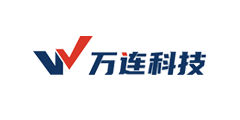The Main Challenges of Connectors in the Application of Internet of Things and IIOT

Internet of things (IOT) refers to the wireless interconnection of electronic products, from electrical, equipment, and vehicles to building control systems. Embedded electronic components, including sensors, controllers, connectors, and cables, can collect and exchange data and be monitored and controlled remotely. Industrial Internet of things (iiot) is a kind of Internet of things specializing in manufacturing, which involves the integration of the Internet of things, real-time analysis, machine learning, and embedded systems, including wireless sensor networks, control systems, and automation technology. Compared with the standard Internet of things, the Internet of things increases the ability of analyze and informed responses. These advanced capabilities improve the efficiency, productivity, and other inherent economic benefits of manufacturing, including smart factories and light-out manufacturing.
Industrial IOT applications in industry 4.0, such as automatic production lines, all need high-speed connection components, which should meet the performance of high reliability, high electromagnetic interference (EMI), and small space occupation.
The main challenges of connectors in the application of the Internet of things and iiot are the increasing data speed and the density of different components. Reliable processing of higher data speeds requires new connector designs. Similarly, higher component density limits the space and component positioning distance of IOT device connectors, which is one of the key design elements to reduce the risk of interference. Another noteworthy challenge is that IOT devices work more frequently. The outdoor environment with frequencies up to 30ghz and the indoor application of 90GHz directly affect the design of equipment. It is necessary to realize electromagnetic compatibility (EMC) to resist interference and radiation sensitivity.
In order to support the global 5g mobile communication network and pave the way for emerging industries and social life such as intelligent factories and autonomous driving. The implementation of the Internet of things, iiot, and industry 4.0 technology puts forward challenging new technical requirements for the interconnection components of these Internet devices. Including faster speed and higher frequency, smaller and smaller size, improved robustness and reliability, and stronger anti-electromagnetic interference (EMI). It is estimated that by 2025, the number of Internet of things devices will soar to 75.44 billion, a fivefold increase in 10 years.
- +1 Like
- Add to Favorites
Recommend
- The Difference between FFC Connectors and FPC Connectors
- What is the Role of Industrial Connectors? What Types of Industrial Connectors Can Be Divided into?
- DIN EN 1100 Certified WSMP® Coaxial Connectors, 45% Smaller than Standard SMP Connectors
- Advantages of Smiths Interconnect EMI Filter Connector and Filtered EMP Connectors
- Mission Critical: Maintain your RF cables and connectors 24 APR Mission Critical: Maintain your RF cables and connectors
- Terminal Connection Method of Electrical Connectors
- In-depth Understanding of the Connection Types of Industrial Connectors
- What will be The Development Trend of Connectors in the Future?
This document is provided by Sekorm Platform for VIP exclusive service. The copyright is owned by Sekorm. Without authorization, any medias, websites or individual are not allowed to reprint. When authorizing the reprint, the link of www.sekorm.com must be indicated.
















































































































































































































































































































































































































































































































































































































































































































































































































































